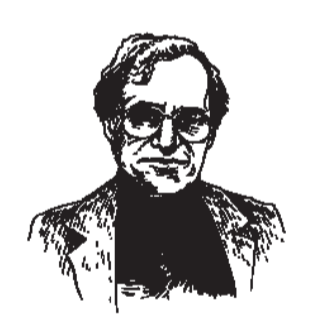“Fog of course and he should have expected it, should have carried a torch. Yet, whatever was to come his way would come, he knew, like this—slowly and out of a thick fog. Accidents, meetings unexpected, a figure emerging to put its arm about him: where to discover everything he dreamed of except in a fog.”
—John Hawkes, The Lime Twig
“I began to write fiction,” John Hawkes once said, “on the assumption that the true enemies of the novel were plot, character, setting and theme.” Friends and foes alike cite this statement as evidence, respectively, of the courageous or the misguided nature of Hawkes’s work. And what friends, what foes! The critical schizophrenia toward Hawkes reached its most fevered pitch with the 1970 publication of The Blood Oranges. In the New York Times Book Review, Thomas McGuane called it the “most accessible novel by, feasibly, our best writer,” while John Sale, writing in the New York Review of Books, began, “John Hawkes’s The Blood Oranges fails because it is the work of a contemptible imagination.” Sale concluded, “When people stop mattering to the novelist, the writing will suffer and the writer should stop.”
The criticism here is twofold. Sale believes that Hawkes, in his commitment to a personal vision, sacrifices what others have termed literary “engagement,” that connection with humanity that many insist is the ultimate end of all great literature. Hawkes himself would concede—no, he would insist upon—the premise of this argument. “I’m only interested in fiction,” Hawkes said, “that in some way or other voices the very imagination which conceives it.” He has firmly stated intentions. “I want whatever one creates out of words to be so clearly something made, so clearly an artifice, artificial.” Hawkes depends for this on what he calls, after Bernard Malamud, “psychic leakage.”[1]
Sale’s other objection is with the vision itself, which he finds “contemptible.” We must grant him at least that it is dark and deeply strange. But in this Hawkes is far from unique. His use of violence and the grotesque recalls writers such as Flannery O’Connor and Nathanael West. The ends to which Hawkes uses these effects, however, are drastically different. About her story “A Good Man is Hard to Find,” O’Connor writes, “This story has been called grotesque, but I prefer to call it literal. A good story is literal in the same sense that a child’s drawing is literal. When a child draws, he doesn’t intend to distort but to set down exactly what he sees, and as his gaze is direct, he sees the lines that create motion.” In fact,...
You have reached your article limit
Sign up for a digital subscription and continue reading all new issues, plus our entire archives, for just $1.50/month.
Already a subscriber? Sign in





